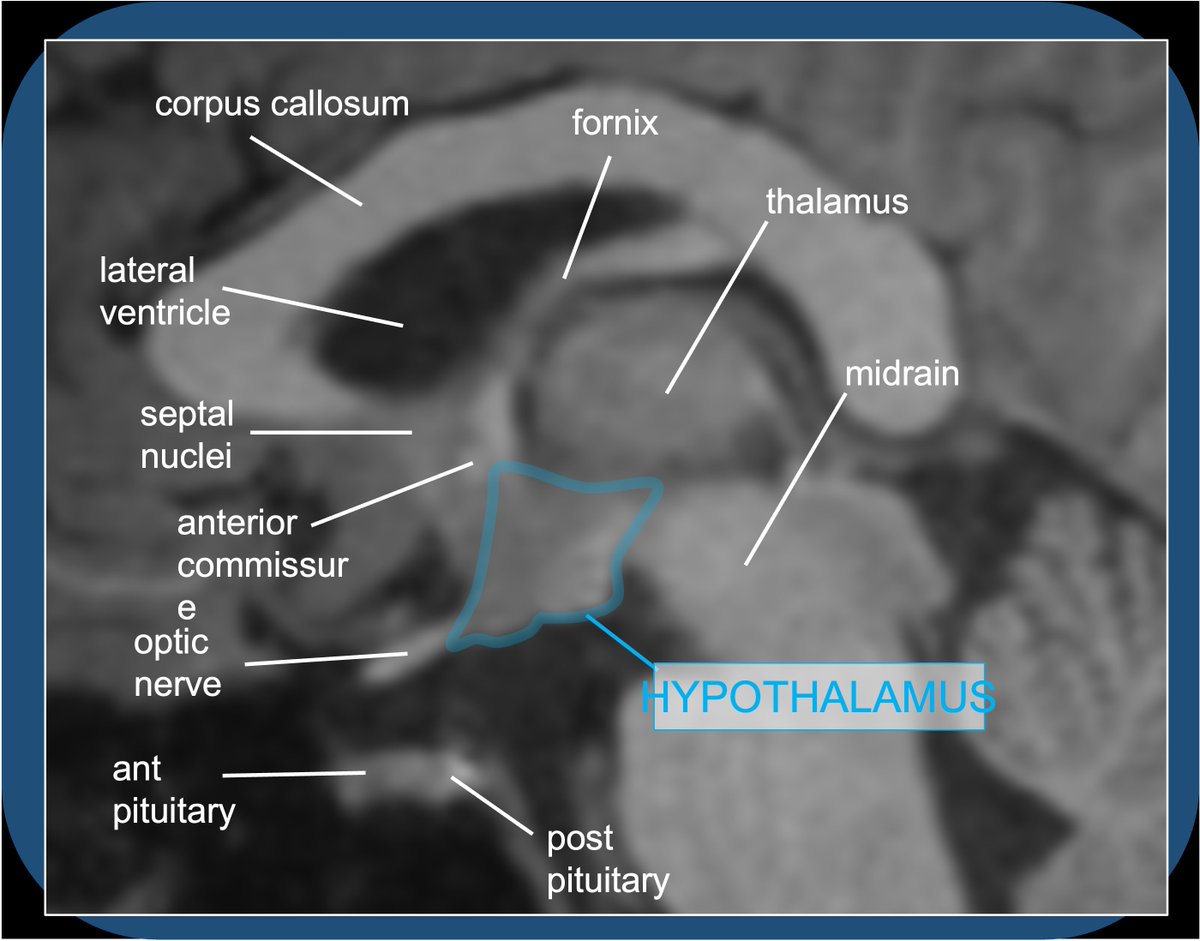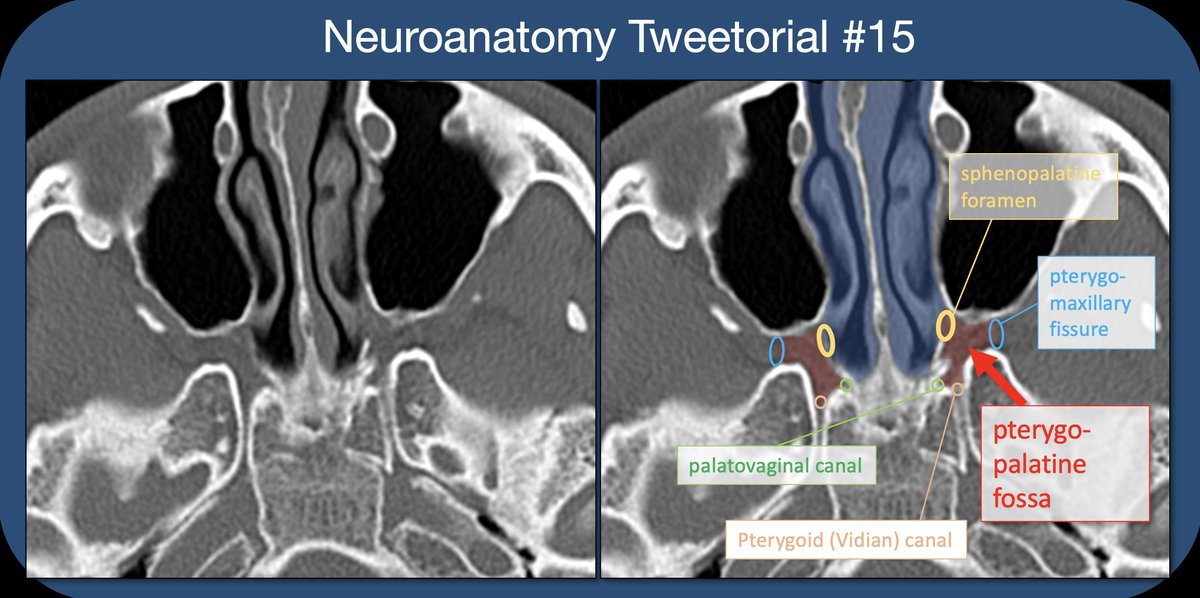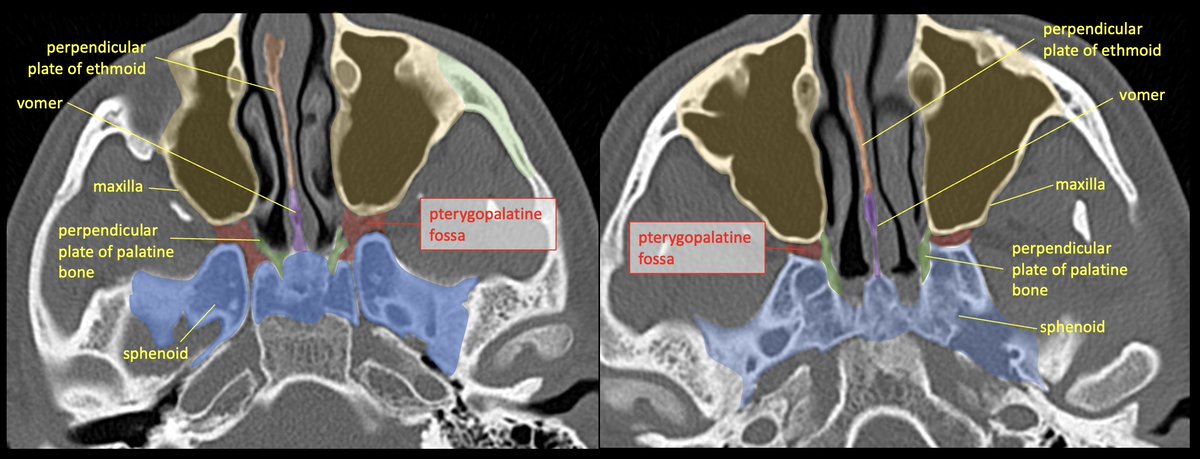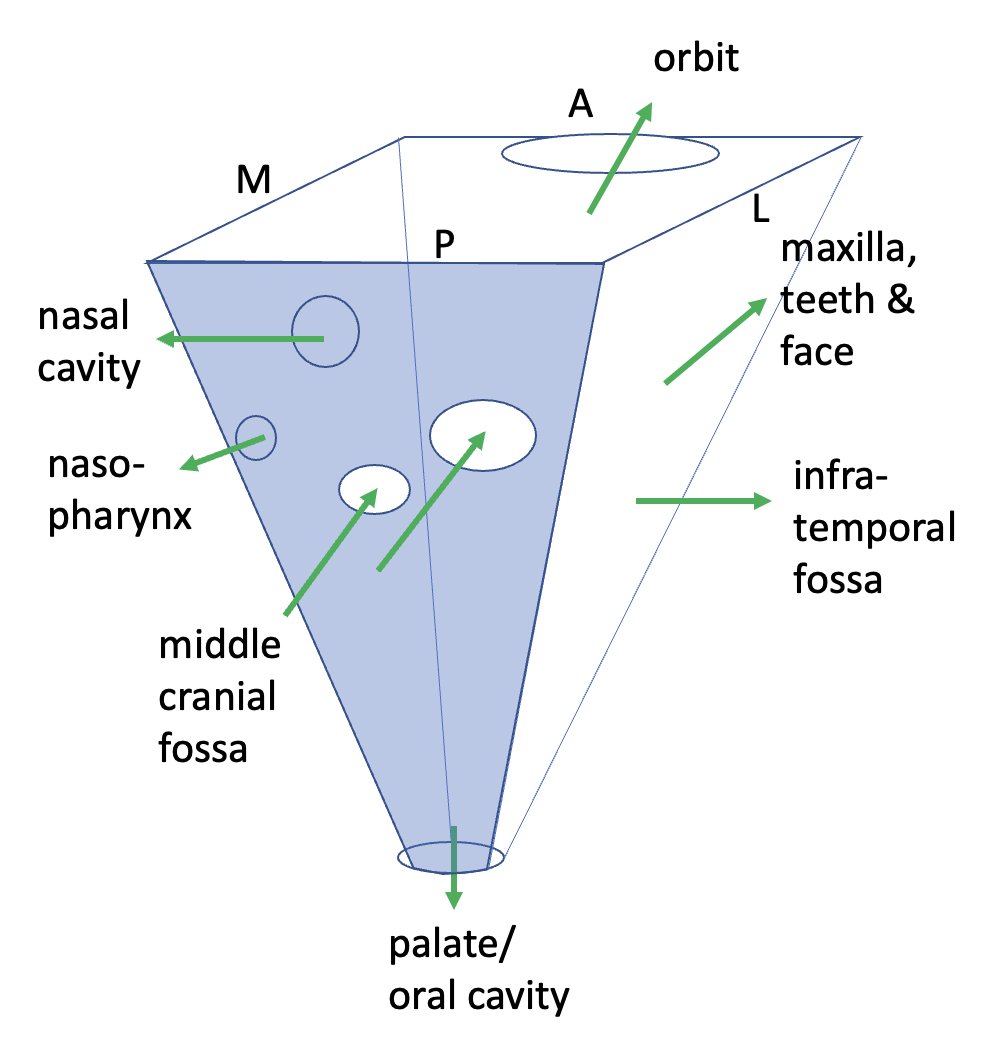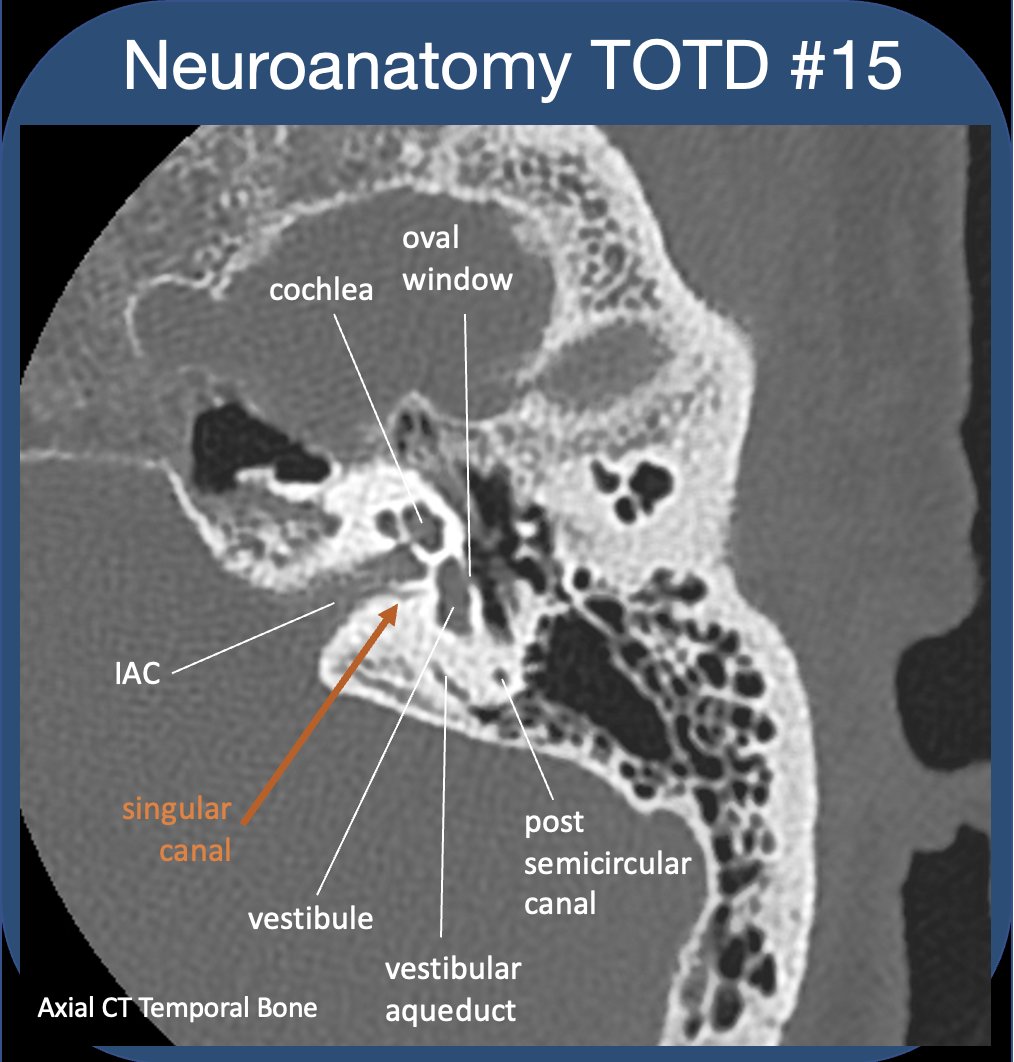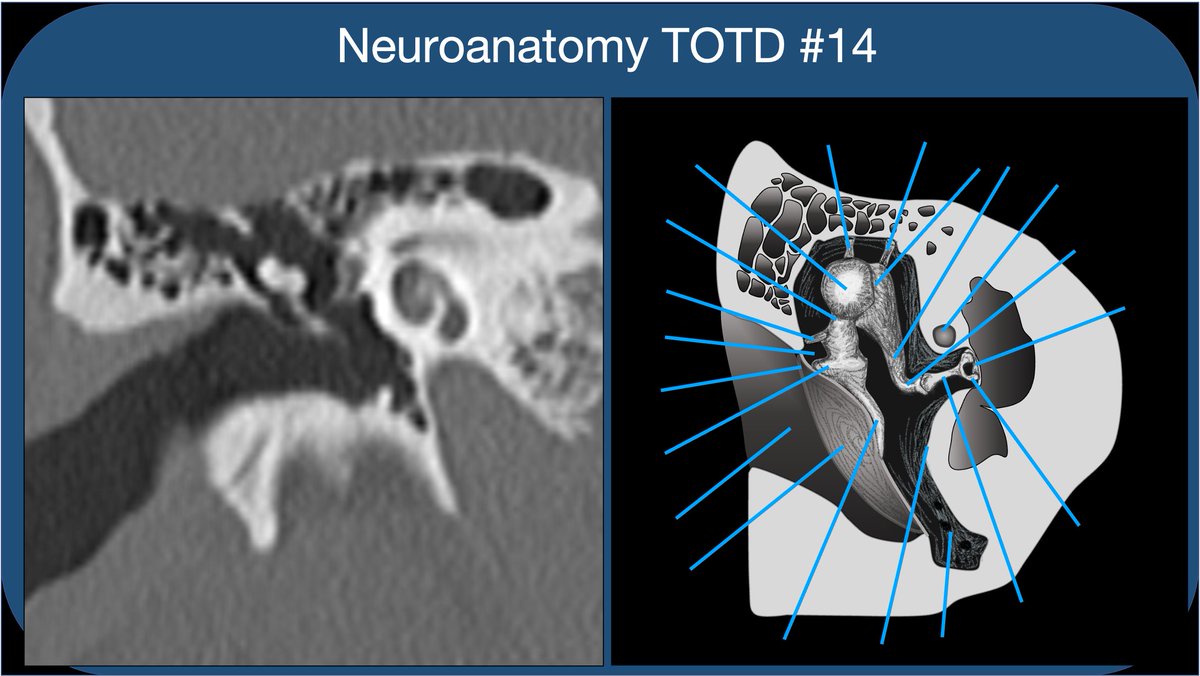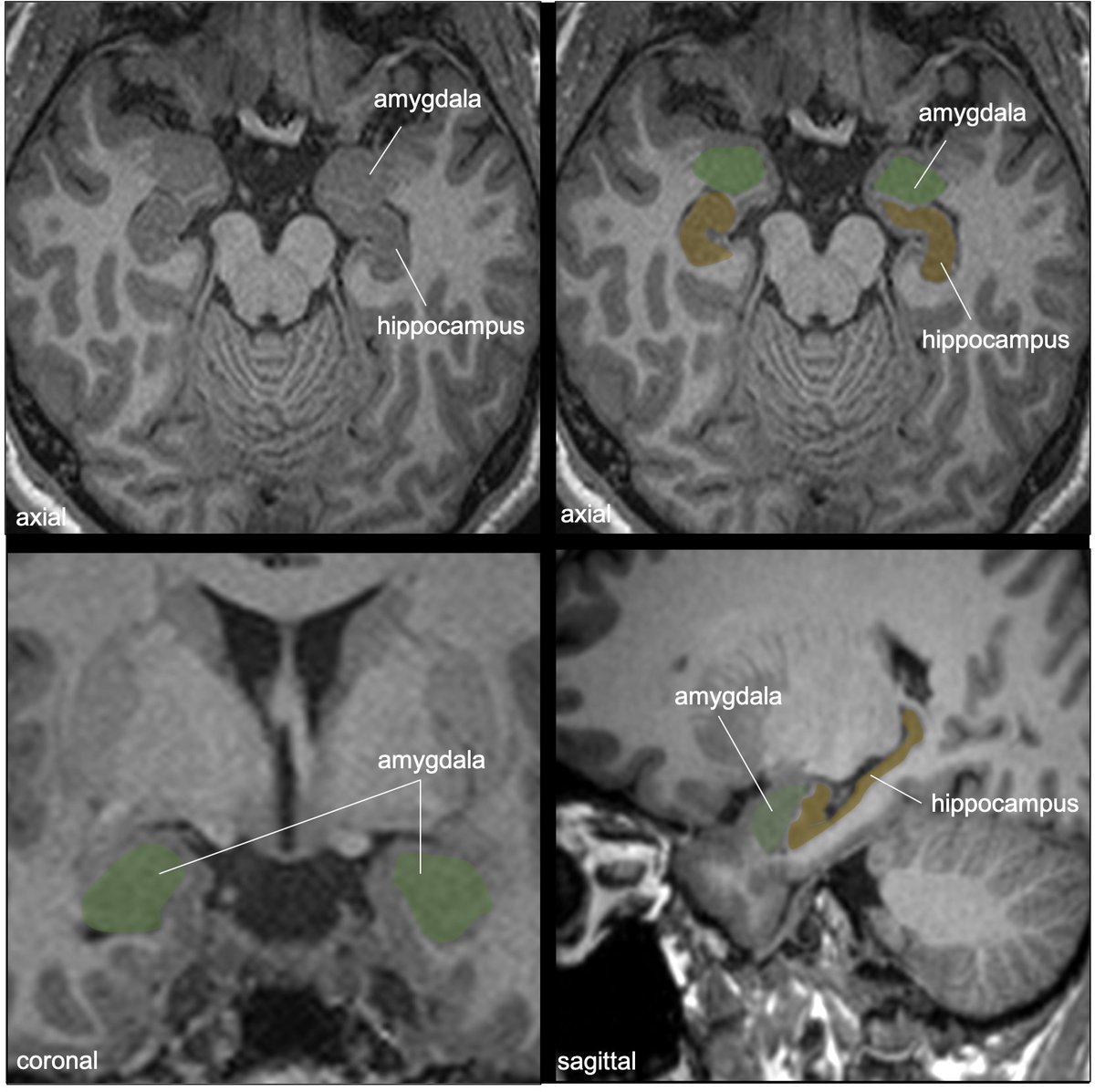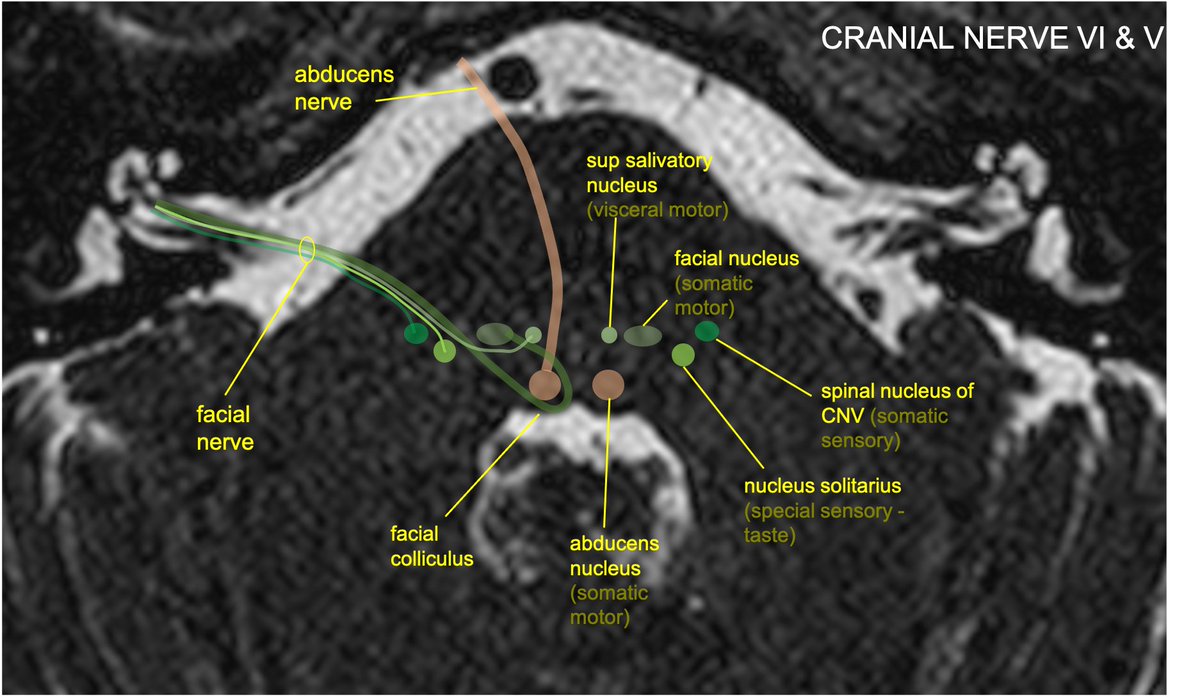Neuroanatomy TOTD #9🧵
1/6 The trigeminal n. courses anteriorly➡️prepontine cistern➡️into Meckel’s cave (green), which lies at the medial floor of middle cranial fossa at the petrous apex.
#meded #FOAMed #FOAMrad #neurorad #neurology #neurosurgery #neuroanatomy #neuroanatomyTOTD
1/6 The trigeminal n. courses anteriorly➡️prepontine cistern➡️into Meckel’s cave (green), which lies at the medial floor of middle cranial fossa at the petrous apex.
#meded #FOAMed #FOAMrad #neurorad #neurology #neurosurgery #neuroanatomy #neuroanatomyTOTD

2/6...Meckel’s cave (MC) is open to the subarachnoid space at its posterior margin (and is therefore filled with CSF). The trigeminal (Gasserion) ganglion lives in MC. Superiomedial to MC (and sharing a dural border), is the cavernous sinus. #radres #neurorad 

3/6...Coursing anteriorly, the V1 and V2 branches of CNV exit MC to travel within the lateral wall of the cavernous sinus. V3 courses inferiorly to exit the middle cranial fossa through foramen ovale, without involving the cavernous sinus. 

4/6...Note the vascular variants in the coronal images of the animation. On the right, there is a persistent trigeminal artery (PTA), as well as a fetal PCA. (Saltzman type II for those who care)! #radres #neurorad
5/6...The persistent trigeminal artery (PTA) is most common of the carotid-vertebrobasilar anastomoses (0.1-.6%) - a variant of embryological development. Arises from petrous/cavernous ICA jxn, runs post along CNV/MC, or passes posteriorly at the dorsum sella. #radres #neurorad 



6/6...Meckel's cave pathology --> large case of trigeminal schwannoma. Note dumbbell shape with post aspect involving the cisternal CNV, and anterior aspect centered in Meckel’s cave (with involvement of adjacent structures). #radres #MedStudentTwitter #MedStudents 

Note that the first image is mislabeled “trigeminal ganglion” when it should say “trigeminal nerve” as it’s pointing to the cisternal segment! Thanks for pointing it out @LorenzoPinelli
• • •
Missing some Tweet in this thread? You can try to
force a refresh


